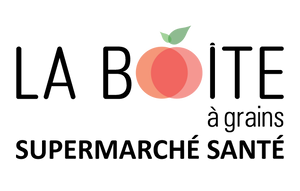FODMAP 101: Nutrition & Definition with Lynn Goneau
As the FODMAP diet gains in popularity and notoriety, it may have already piqued your curiosity. Let's take a look at the FODMAP diet to better understand its basis.
What does FODMAP mean?
The acronym FODMAP was proposed by Australian researchers in 2004, following the discovery of the relationship between foods rich in free sugars and intestinal disorders. FODMAP includes the following carbohydrate-rich foods:
F foods fermentable (fermentable) i.e. foods that ferment during the digestion process. It is the fermentation of sugars in the intestine of certain carbohydrates that causes gas and intestinal discomfort.
O : the oligosaccharides are free sugars particularly appreciated by intestinal bacteria, helping them to proliferate. Excessive proliferation of these bacteria can cause digestive discomfort in sensitive individuals. Oligosaccharides include fructan, GOS (galacto-oligosaccharides) and FOS (fructo-oligosaccharides).
D : the disaccharides are duos of fused sugars. These include lactose, sucrose (white sugar) and maltose. These carbohydrates are major contributors to obesity, diabetes, tooth decay and mental health problems. In sensitive individuals, they are also intestinal irritants.
M : glucose, dextrose, fructose and galactose are the main monosaccharidescarbohydrates comprising a single free sugar unit. Excess fructose (found mainly in fruit and honey) can lead to digestive discomfort.
A : and
P : the polyols also known as polyalcohols and sugar alcohols, are natural sweeteners that are poorly digested and therefore largely fermented by colonic bacteria. The most common polyols are sorbitol, maltitol and xylitol.

